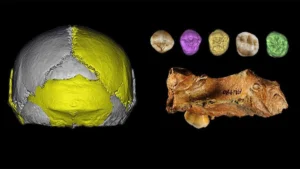Indian Scientists Discover Massive Exoplanet TOI-6038A b

The article is also available as video for barrier-free access to information!
In a significant leap for India’s space research, scientists from the Physical Research Laboratory (PRL) in Ahmedabad have identified a colossal exoplanet named TOI-6038A b. This planet, located approximately 600 light-years away, boasts a mass 78.5 times that of Earth and a radius 6.41 times larger, categorizing it as a “sub-Saturn”—a class of planets absent in our solar system.
Orbital Characteristics and Stellar Environment
TOI-6038A b orbits a bright, metal-rich F-type star every 5.83 days, indicating a close and rapid orbit. This star is part of a wide binary system, accompanied by a K-type companion star situated 3,217 astronomical units away. The presence of this distant companion adds complexity to the planet’s formation and migration theories.
Composition and Structure
Preliminary analyses suggest that TOI-6038A b has a dense structure with a massive rocky core constituting nearly 75% of its total mass. This composition challenges existing models of planetary formation, especially for planets of such significant mass and size.
Discovery and Technological Advancements
The discovery was made using the PARAS-2 spectrograph, an advanced instrument attached to the 2.5-meter telescope at PRL’s Mount Abu Observatory. PARAS-2 is recognized as the highest-resolution stabilized radial velocity spectrograph in Asia. This marks the second exoplanet discovery using PARAS-2 and the fifth overall by Indian scientists, highlighting India’s growing capabilities in astronomical instrumentation and research.
Implications for Future Research
The brightness of the host star makes TOI-6038A b an excellent candidate for atmospheric characterization and spin-orbit alignment studies. Such investigations are crucial for understanding exoplanet migration patterns and the dynamics of planetary systems, especially those involving binary stars.
This discovery not only enriches our understanding of planetary diversity beyond our solar system but also underscores India’s advancing role in the field of space exploration and research







